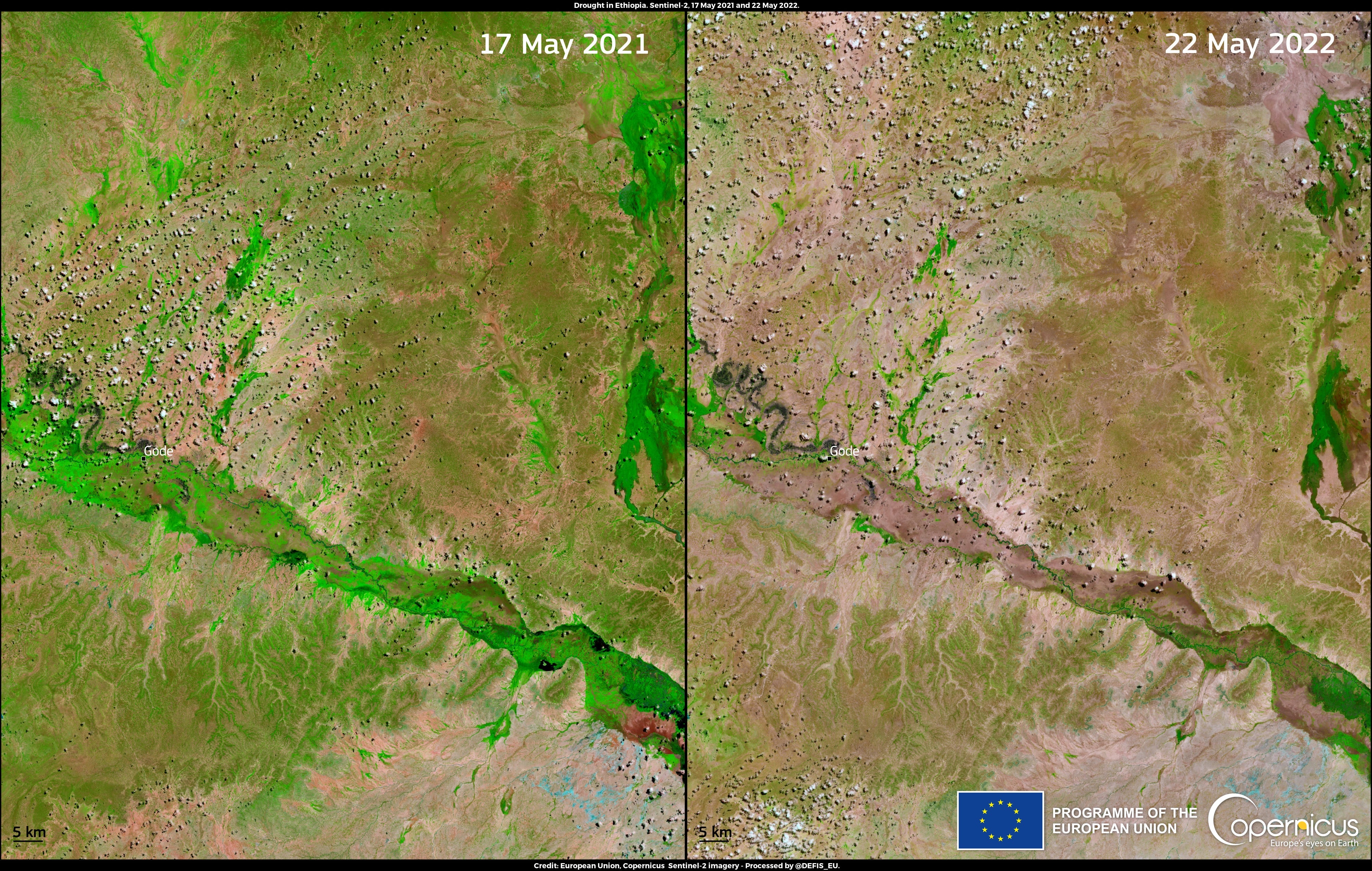Before and after: Satellite image shows horrific drought scouring Horn of Africa
The drought has been described as a ‘once-in-a-generation crisis’

Your support helps us to tell the story
From reproductive rights to climate change to Big Tech, The Independent is on the ground when the story is developing. Whether it's investigating the financials of Elon Musk's pro-Trump PAC or producing our latest documentary, 'The A Word', which shines a light on the American women fighting for reproductive rights, we know how important it is to parse out the facts from the messaging.
At such a critical moment in US history, we need reporters on the ground. Your donation allows us to keep sending journalists to speak to both sides of the story.
The Independent is trusted by Americans across the entire political spectrum. And unlike many other quality news outlets, we choose not to lock Americans out of our reporting and analysis with paywalls. We believe quality journalism should be available to everyone, paid for by those who can afford it.
Your support makes all the difference.These harrowing images show the devastation caused by the severe drought affecting the Horn of Africa.
The stills, acquired by the EU’s Copernicus Sentinel-2 satellites on 17 May 2021 (left) and 22 May 2022 (right), show the effects of water scarcity in the Gode area, in the Somali Region of Ethiopia.
The country is experiencing its worst drought since 1981. Many crops have failed and over a million livestock have died, two-thirds of which are in the Somali Region.
Although April is supposed to be one of the wettest months in the region, a drought sparked by the La Niña weather phenomenon is persisting.
The extreme drought is having devastating consequences on the local population. According to the World Food Programme, the number of people in the Horn of Africa pushed into hunger as a direct consequence of the current drought could rise from the current 14 million to 20 million by the end of the year.
In Ethiopia alone, the estimated number of people suffering from food shortage currently stands at 7.2 million.
The UN Office for the Coordination of Humanitarian Affairs (OCHA) says families are taking desperate measures to survive, with thousands leaving their homes in search of food, water, and pasture.
A statement adds: “The risks faced by women and girls—including gender-based violence and death during childbirth—have risen sharply since the drought began.
“The threat of large-scale loss of life is rising each day and more funding is immediately required to enable humanitarian partners to respond at-scale to this once-in-a-generation crisis.”
Join our commenting forum
Join thought-provoking conversations, follow other Independent readers and see their replies
Comments